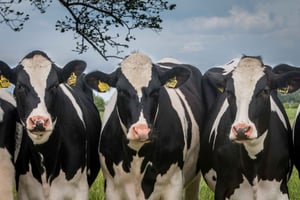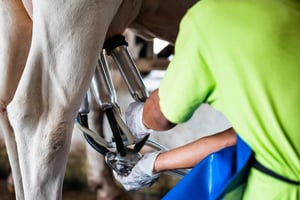Module 11 | Advanced dairy and beef nutrition
TUESDAY 4 JUNE
Ration composition and nutrient contents have a great impact on the production performance of dairy cows and beef cattle. Variation in roughage and concentrate quality can have a large impact on animal performance and can be used to manipulate production levels, milk composition, growth and carcass composition. Better knowledge of the effect of nutrition on ruminant digestion and metabolism gives you the tools to improve animal performance. On the other hand, actual animal performance can be used as a tool to evaluate the nutritional status of the animals and provide information to understand deviations in animal performance. It also supports you to make better decisions in formulating concentrate feeds and complete rations for farmers.
Learning objectives
- To obtain further knowledge on the fermentation, digestion and metabolism in ruminants and how this information can be used to model dairy cow nutrition and beef cattle nutrition.
- To understand the impact of nutrients on milk production and composition, so that feeding strategies can be applied to improve production or composition.
- To learn more about specific treatments of feedstuffs for high yielding animals like bypass protein, fat and starch sources and the impact on fermentation and digestion and milk production parameters.
Remarks
- Please be aware that SFR recommendations will not be presented during this module.
- For more knowledge on nutritional strategies it is recommended to (also) attend module 12 Applied dairy nutrition and/or 13 Feeding management and ration formulation.
TUESDAY 4 JUNE
Ruminant digestion and metabolism using the E-Dairy/E-beef model
In this topic the principles of nutrient oriented feed evaluation are presented. From the composition and fermentation/digestion of nutrients in the rumen, small intestine and hindgut the aminogenic, glucogenic and lipogenic nutrients are derived. From these nutrients a new Net Energy system (the E-dairy/E-beef system) has been developed. This model is compared to other international feed evaluation systems.

Bypass protein and fat sources in ruminant nutrition
High yielding animals require high energy diets containing bypass protein and fats. Many different sources of bypass protein and fat are available and differ in technological treatment. In this presentation several examples on the impact of specific treatments on rumen fermentation and intestinal digestion and the effect on nutritive value of these specific feedstuffs using the E-dairy/E-beef model is presented.
Manipulation of milk production and composition
Based on the E-dairy system the effect of nutrients in the diet on feed intake and milk production is presented. Focus will be on milk lactose, protein, fat, fatty acid composition, free fatty acids and milk urea. The direct and indirect effects of nutrients on milk production performance will be described and discussed.

Effects of technological treatments on feeding value of grains
Grains are an important source of glucogenic nutrients for high yielding dairy cows or beef cattle by fermentable carbohydrates but also of bypass starch. The effect and possibilities to use grains in dairy cow diets is largely dependent on the processing of grains. Technological treatment has an impact on both degradation and passage parameters. The effect of different technological treatments (e.g. grinding, pelleting, expanding, rolling, cracking) on the nutritional value of grains in the E-dairy/E-beef model are used as example.
Meet the trainers

